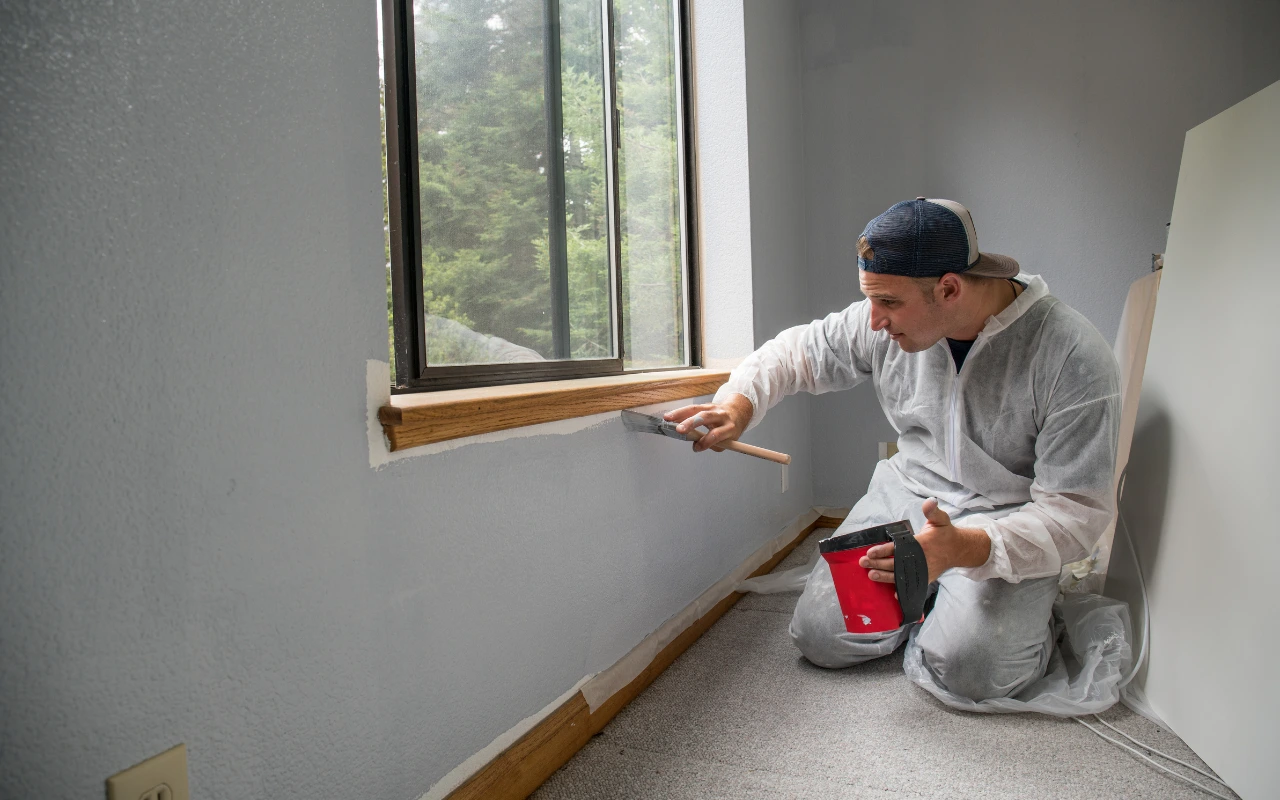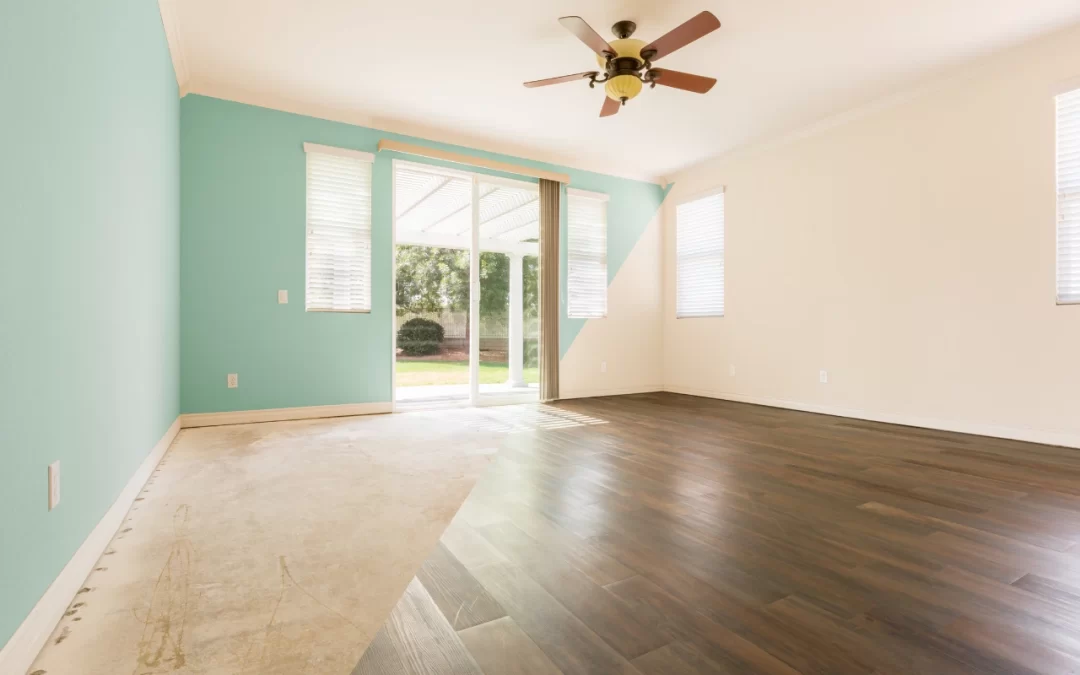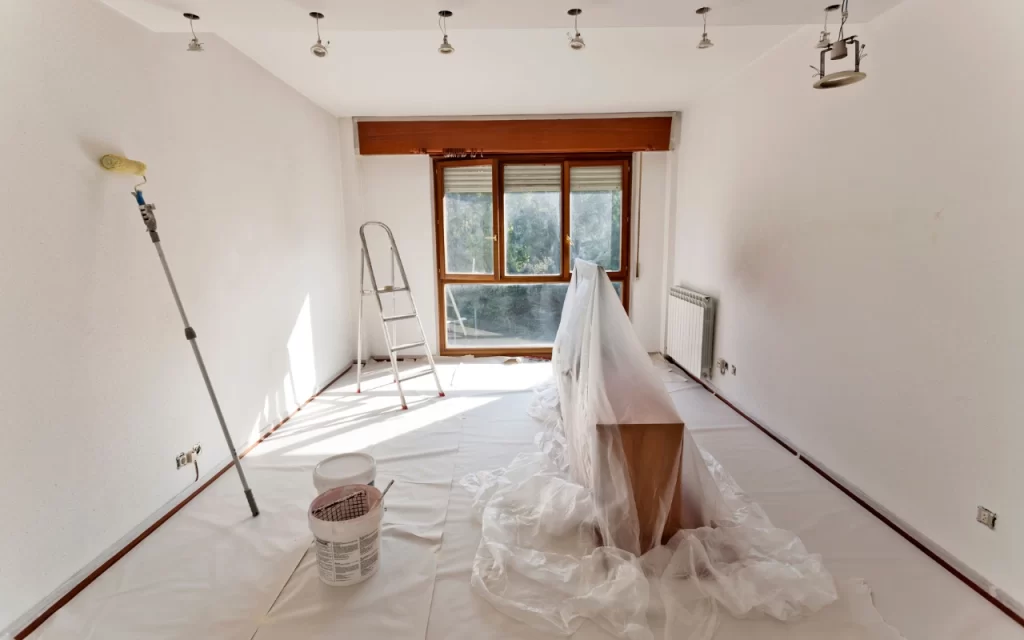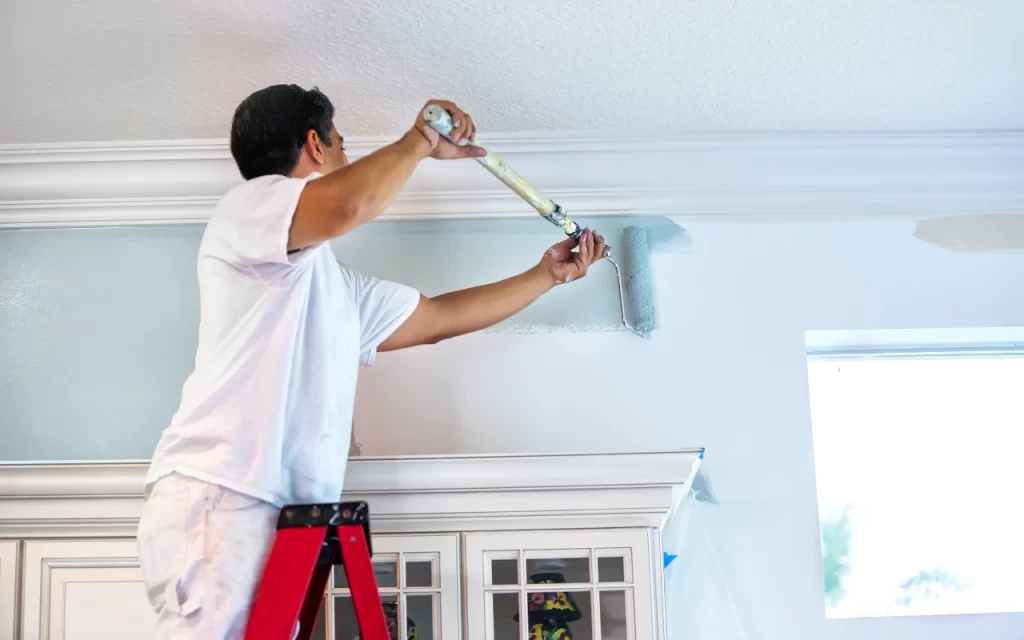Repainting the interior of your home can rejuvenate your living space, breathe new life into tired walls, and even increase the overall value of your property. However, one of the first questions homeowners often ask is, how much to repaint house interior? This blog post will guide you through estimating the costs involved, the benefits of DIY versus hiring professionals, and additional factors that may influence your painting budget.
How Do I Estimate the Cost of Painting the Interior of a House?
Estimating the cost of repainting the interior of a house can seem daunting, but breaking it down into manageable parts can make the process easier. Several factors affect the overall price, including:
- Room Size: The larger the room, the more paint you’ll need. Measure the dimensions of each room to determine the square footage. There are 350 square feet that a gallon of paint can usually cover.
- Paint Quality: The price will depend on the brand and quantity of paint you pick. It may cost more upfront, but better paints can cover better and last longer, which could save you money in the long run.
- Labour Costs: If you hire professionals, labour costs can be a significant part of your budget. Painters usually charge between $20 and $50 an hour, depending on where you live and how experienced the painter is.
- Preparation Work: Additional costs can arise if your walls require extensive preparation, such as patching holes, sanding, or priming. These tasks can add to both time and labour costs.
- Paint Type: There are various types of paint finishes available, including matte, eggshell, satin, semi-gloss, and gloss. Each finish has different price points, and your choice can affect the overall cost.
- Additional Materials: Remember the cost of brushes, rollers, tape, drop cloths, and other supplies. Even if you’re painting yourself, these materials can add up.
For a more accurate estimate, consider creating a detailed spreadsheet that includes each room’s dimensions, the type of paint desired, and any additional preparation work needed.
Is It Cheaper to Paint Your Own House Interior?
One of the most significant questions homeowners face is whether to tackle the job themselves or hire professionals. You can save money on work costs by painting yourself, but you must carefully weigh the pros and cons.
Pros of DIY Painting:
- Cost Savings: Painting your home yourself can significantly reduce costs. You’ll only need to pay for paint and materials rather than labour.
- Flexibility: You can choose when to work on your painting project, making it easier to fit around your schedule.
- Satisfaction: Finishing a do-it-yourself job makes you feel good about your work. You should be proud of the work you’ve done.
Cons of DIY Painting:
- Time-Consuming: Painting can take much longer if you don’t have experience. What might take a professional a day could take you a weekend or more.
- Skill Level: You must gain experience to achieve your desired professional finish. Mistakes can lead to additional costs for touch-ups or corrections.
- Safety Risks: Safety risks increase if your home has high ceilings or requires scaffolding. Hiring professionals makes sure the job is done right and safely.
Ultimately, deciding to paint your home interior should consider your skill level, available time, and budget. We at Stretch Paints offer exemplary services that can make the process more manageable if you decide to hire pros.
What Is the Average Cost to Paint an Interior Room?
On average, the cost to paint an interior room ranges from $300 to $800, depending on various factors, including size, paint quality, and whether you hire professionals. Here’s a breakdown of costs by room size:
- Small room (e.g., bathroom or office): Approximately $300 to $500.
- Medium room (e.g., bedroom or dining room): Approximately $400 to $700.
- Large room (e.g., living room or open concept space): Approximately $700 to $1,200.
These prices usually include paint and labour, but they can vary depending on your needs. For a more detailed estimate, consider contacting local painters for quotes.
When considering the costs of painting, it’s essential to remember the added value a fresh coat of paint can bring to your home. A room that is well painted not only looks nice, but it can also make the whole atmosphere better.

Interior Painting Cost Alterations
Several factors can lead to alterations in your painting costs. Knowing about these things can help you make a better budget.
The complexity of the job:
If your interior walls have intricate architectural features like crown moulding, wainscoting, or textured surfaces, the complexity can increase labour time and costs.
Wall Condition:
Damaged, dirty, or stained walls may require more preparation work. This could include washing, patching, or sanding, which can add to your overall costs.
Colour Changes:
If you’re switching from a dark colour to a lighter one, additional primer and coats of paint may be needed, raising your material costs.
Seasonality:
In some areas, demand for painting services can fluctuate seasonally. Prices may increase during peak seasons, such as spring and summer, when more people renovate homes.
Location:
The costs can be very different depending on where you live. There may be higher labour rates in cities than in rural places.
Style of Painting:
If you opt for unique styles like stencilling, faux finishes, or murals, these techniques can increase the overall cost due to the skill required.
Eco-Friendly Options:
Choosing low-VOC or eco-friendly paints can sometimes be more expensive than standard options. However, these paints may be a worthwhile investment for health-conscious homeowners.
When budgeting for your interior painting project, consider these factors to avoid unexpected costs. Being informed will help you make the best decisions for your home and wallet.
The Bottom Line on Repainting House Interior
Finally, the cost of painting the inside of your home varies on several things, such as the size of the room, the paint you choose, and whether you do it yourself or hire someone to do it for you. Prices range from $300 for a small room to more than $1,200 for a bigger living room.
You can make a reasonable budget whether you decide to do the job yourself or hire professionals. This is because you will know what factors affect costs. If you are considering hiring professionals, we at Stretchpaints are here to assist you in achieving a beautiful finish.
Consider additional factors such as room conditions, job complexity, and potential seasonal price fluctuations when estimating your painting costs. Lastly, whether you’re interested in Commercial Painting, Residential Painting, or pondering How Much it is to Paint a 3 Bedroom House: Professional vs DIY, knowing what to expect can help you make informed decisions about your interior painting project.
A new coat of paint can make your home look great and give you pleasure for years!




Recent Comments